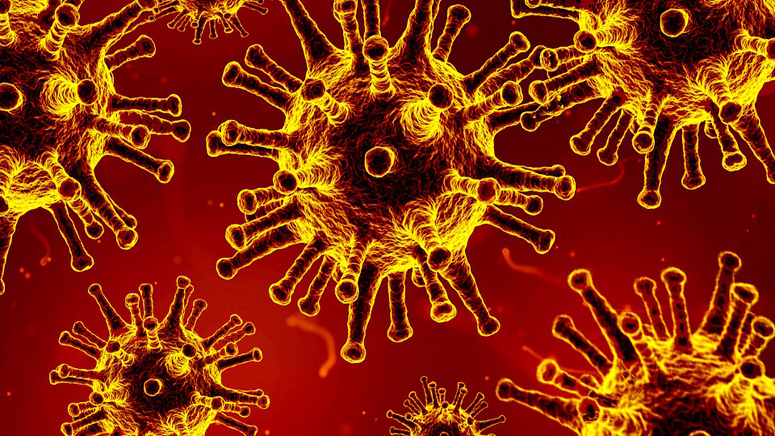(CNN) — With more than two dozen states reporting rising Covid-19 infections, new reports from leading health officials show a worsening of the pandemic across several US regions.
In White House coronavirus task force reports obtained by CNN this week, officials say there are “early signs of deterioration in the Sun Belt and continued deterioration in the Midwest and across the Northern States.”
The data comes as more state leaders have sounded the alarm on increasing infections, hospitalizations and deaths. The national average of new daily cases has climbed to just under 60,000 — a level that hasn’t been seen since the first week of August.
On Wednesday, at least 14 states saw their highest seven-day average of new daily cases, according to Johns Hopkins University: Alaska, Colorado, Idaho, Illinois, Indiana, Kansas, Kentucky, Michigan, Montana, New Mexico, Ohio, Utah, Wisconsin and Wyoming. And at least five states — Illinois, Montana, Ohio, Oklahoma and Utah — reported their highest daily case counts Thursday.
Meanwhile, more than 41,000 people are hospitalized with Covid-19 across the country, according to the COVID Tracking Project. Hospitals in states like Missouri and Idaho say they’ll soon be facing a crisis if hospitalizations continue to surge.
Deaths are also creeping upward. On Wednesday, the US reported the highest daily death toll in more than a month, with more than 1,100 new deaths. And an updated model from the University of Washington’s Institute for Health Metrics and Evaluation projects more than 140,000 Americans will likely die from the virus in the next three months.
States will likely ‘reimpose some social distancing mandates’
The institute says the “fall/winter surge has begun” — just a couple weeks behind Europe — and will intensify in November and December before reaching a peak in January.
“Many states will face enormous pressure on hospital capacity and will likely have to re-impose some social distancing mandates,” IHME said. “The best strategy to delay re-imposition of mandates and the associated economic hardship is to expand mask use.”
At least 32 states are reporting more new cases than the previous week, according to data from Johns Hopkins University. Only one state — Oregon — is trending in the right direction. Several state and local leaders have already pushed new efforts in hopes of holding down the virus ahead of the winter months.
Illinois Gov. J.B. Pritzker announced restrictions for several regions of the state. In New Orleans, Mayor LaToya Cantrell said any individual not wearing a mask in the city would be subject to a citation by police of up to $500.
“There are already laws on the books … it’s just a matter of taking that step to enforce, based on our police officers’ discretion,” the mayor said.
Utah state health officials also announced additional mitigation efforts for more than 20 counties that are considered to be at high transmission risks. Those efforts include limiting casual social gatherings to 10 people.
In Wisconsin, Gov. Tony Evers announced Wednesday was the single deadliest day in the state since the pandemic started and urged residents to help drive down numbers. The state has also reported record-high case numbers in recent days and this week admitted its first patient to a field hospital that opened in response to surging hospitalizations.
“Make no mistake about this, this is an urgent crisis,” Evers said. “If this weren’t absolutely serious and if this wasn’t an emergency, I wouldn’t be sitting here twice a week asking you to stay home.”
Small gatherings, house parties helping drive the surge
In its state reports, the White House task force recommended “strong mitigation efforts,” including “mask wearing, physical distancing, hand hygiene, avoiding crowds in public and social gatherings in private.”
That comes just days after the group expressed concerns about small household gatherings helping drive the surge of cases.
In Maryland, Gov. Larry Hogan said Thursday family gatherings were the number one source of transmission in the state.
“Our contact tracing operations continues to show social gatherings remain the most likely source of transmissions,” the governor said. “The number one activity of those who have tested positive continues to be family gatherings, followed by house parties.”
The governor’s remarks come weeks ahead of the holidays that experts fear may help drive infection numbers higher. Doctors worry that as many college students return home, they may unknowingly bring the virus with them. And as large families gather for Thanksgiving and other events, they could be adding to an already rampant spread. Infectious disease experts say virtual celebrations may be the best route to celebrate this year.
Remdesivir gets FDA approval
Meanwhile, the US Food and Drug Administration approved remdesivir for the treatment of Covid-19 infection, the drug’s maker, Gilead Sciences, announced Thursday.
The drug, sold under the brand name Veklury, has been used under emergency use authorization since May. It’s the first drug to be approved for treating Covid-19.
“In the United States, Veklury is indicated for adults and pediatric patients (12 years of age and older and weighing at least 40 kg) for the treatment of COVID-19 requiring hospitalization,” the company said in a statement.
“Veklury should only be administered in a hospital or in a healthcare setting capable of providing acute care comparable to inpatient hospital care.”
But earlier this month, World Health Organization officials said that a study had shown the antiviral drug has “little or no effect on mortality” for patients hospitalized with the virus and doesn’t seem to help patients recover faster either. The WHO said the study provided “conclusive evidence” and the findings were disappointing.
(Copyright (c) 2024 CNN. All Rights Reserved. This material may not be published, broadcast, rewritten, or redistributed.)

